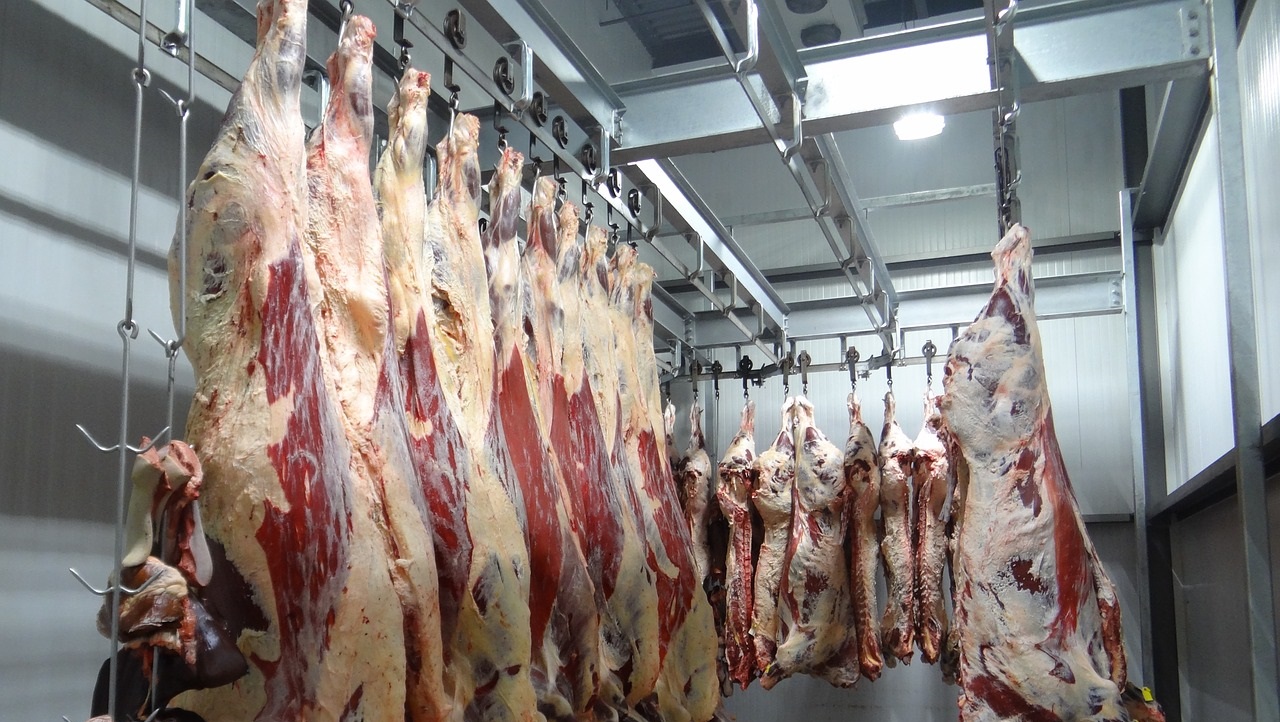The coronavirus-induced government shutdown has wreaked havoc on U.S.food supply chains. But the stage was set for this problem decades ago thanks to the federal government.
We see shortages of meat on store shelves even as farmers face the prospect of euthanizing entire herds. This bizarre situation came about when several meat processing plants shut down due to COVID-19
For instance, Smithfield shuttered one of the largest pork processing facilities in the country. The Sioux Falls South Dakota plant produces between 4 and 5 percent of the country’s pork. It is just one of many meat processing plants that have closed down. Smithfield CEO Kenneth Sullivan warned that the U.S. is dangerously close to a significant meat shortage.
“The closure of this facility, combined with a growing list of other protein plants that have shuttered across our industry, is pushing our country perilously close to the edge in terms of our meat supply, It is impossible to keep our grocery stores stocked if our plants are not running. These facility closures will also have severe, perhaps disastrous, repercussions for many in the supply chain.”
In a radio interview, Rep. Thomas Massie (R-Ky.) said that at least six large meat processing plants have shut down. On plant was processing 1,900 cattle a day. Massie said the pandemic has exposed the fragility of the U.S. food supply chain.
“The shocking thing is that farmers are watching the value of their hogs and steers, cows, go down. In fact, they’re going to some of the lowest levels ever. So the question is: why is the price of meat going up in the supermarkets and the price of cattle going down at the auction ring? It’s because our supply line is brittle. You have to take cattle, steer, beef, whatever, hogs, to a processing plant. And these processing plants, like much of industrial America right now, are shutting down because of absentees, which has been exacerbated by the unemployment program the federal government has instituted — plus the $1,200 checks that are about to hit, plus some of the regulations that the states have put in place.”
But it’s not just the policies put in place due to the pandemic that stressed the meat supply chain to its breaking point. A federal act passed by Congress more than five decades ago set the system up for a breakdown.
The Wholesome Meat Act of 1967 mandates meat must be slaughtered and processed at a federally inspected slaughterhouse, or in a facility inspected in a state with meat inspection laws at least as strict as federal requirements. Small slaughterhouses cannot meet the requirements. As a result, the meat processing industry went through massive consolidation. Since the passage of the act, the number of slaughterhouses dropped from more than 10,000 to 2,766 in 2019. Today, instead of hundreds of companies processing meat, three corporations control virtually the entire industry.
The lack of adequate processing capacity was already causing supply issues back in 2015. A report by the Farm-to-Consumer Legal Defense Fund sounded the warning at that time.
“The bottleneck caused by the lack of slaughterhouses has frustrated small livestock operations in getting their products to market and has led to an inability to meet the overall demand for locally produced meat. The 1967 Act has been one of the worst laws ever passed for local food; what’s more, it was known from the beginning that the Act would have the effect it did.”
Of course, the Wholesome Meat Act was sold on the basis of “food safety.” It doesn’t even deliver on its own terms. By concentrating meat processing in relatively few facilities, the likelihood of widespread contamination increases. A single sick cow can infect thousands of pounds of beef in one of these corporate slaughterhouses. In a more diversified, decentralized system, outbreaks generally remain limited to small regions. Farm-to-Consumer Legal Defense report said, “The Wholesome Meat Act has not led to the production of safer meat today; there are more recalls than ever for positive pathogen tests in meat products.” You seldom saw nationwide recalls in the era of diversified meat processing.
And as we’re now discovering, this centralized system is prone to crack with even a modest amount of stress.
In a decentralized system of 10,000-plus processing plants, we would barely notice the shutdown of less than a dozen facilities. In the corporate-dominated business environment incentivized by the federal government, we stand on the brink of significant meat shortages while farmers figure out the best way to kill their animals.
President Trump ordered all of the shuttered mear processing plants to open. (With dubious authority to do so). I suppose that makes him the hero in the story. But this is just another example of government “fixing” a problem it caused in the first place. Government always takes the credit, never the blame.
Centralized systems are brittle systems. They lack redundancy. They lack “escape valves. They are prone to fail under stress. This is true of supply chains, economies and governments.




